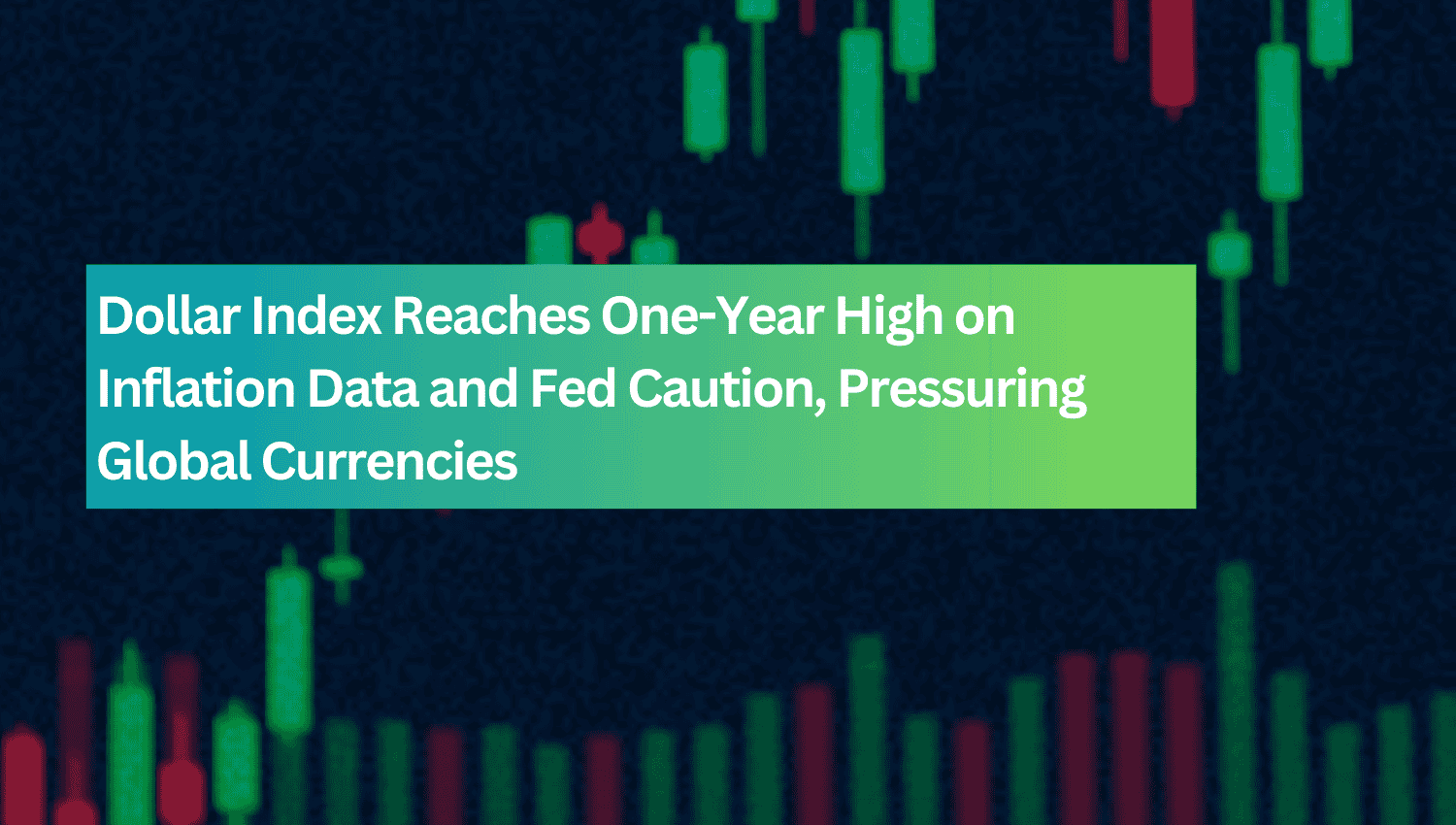Dollar Surges as Fed Signals Caution Amid Persistent Inflation

Dollar Surges as Fed Signals Caution Amid Persistent Inflation
The U.S. dollar index surged to its highest point in a year, bolstered by strong inflation data and comments from Federal Reserve officials signaling a careful approach to rate cuts. Dallas Fed President Lorie Logan stressed the importance of a measured rate-cut strategy to prevent renewed inflation pressures, while St. Louis Fed President Alberto Musalem highlighted the potential for slower inflation progress. The latest consumer price index data for October showed a 0.2% monthly increase, pushing the annual rate to 2.6%, indicating inflationary pressures remain.
Economic Growth and Inflation Expectations Fuel Dollar Strength
Despite inflation, consumer spending in the U.S. remains resilient with income gains helping households manage rising debt. However, the New York Fed cautioned about increasing signs of financial strain in Q3. President Biden’s scheduled meeting with Chinese President Xi Jinping further captures market attention, as trade and geopolitical stability remain crucial for global investor sentiment. The dollar’s strength has pushed it into overbought territory, but with no immediate signs of retreat as inflation expectations continue to support it.
Markets React to Dollar Rally and Fed's Cautious Stance on Rate Cuts
The market outlook reflects a likely delay or moderation in future rate cuts as inflation persists, reinforcing the dollar’s bullish momentum. Bitcoin surged to the $90,000 mark amid strong investor interest, while the S&P 500 gained, led by consumer discretionary stocks, highlighting upbeat sentiment. In commodities, oil prices rose by 0.79% on potential Iranian export curbs, while gold fell by 0.62%, pressured by the stronger dollar. Treasury yields saw mixed movement with a steepened curve, signaling investor caution but underlying optimism.
Euro and Pound Struggle Amid Dollar Strength and Inflation Concerns
The dollar’s rally has weighed heavily on the euro, which dropped below 1.06, hitting a one-year low. Concerns around eurozone growth were heightened as Bundesbank President Joachim Nagel warned that potential U.S. tariffs could impact German output by 1%. ECB official Francois Villeroy de Galhau hinted at further rate cuts as inflationary pressures moderate in France. Sterling, however, showed resilience against the euro after BoE policymaker Catherine Mann cautioned that high inflation risks remain, suggesting limited room for a dovish approach by the Bank of England.
Commodity Markets Under Pressure from Strong Dollar
In commodity markets, both gold and copper declined due to the dollar’s strength, while oil prices gained modestly on the prospect of restricted Iranian exports. The rising dollar and concerns around a global economic slowdown have weighed on commodity-linked currencies, including the Australian dollar, which softened amid these challenges.
Currency Outlook: Dollar Strength Likely to Persist Amid Fed’s Cautious Stance
The dollar is expected to hold its strength as inflation concerns persist, likely tempering expectations for immediate Fed rate cuts. The euro faces continued pressure with the potential for further ECB rate cuts and the economic impacts of U.S. trade policies. Sterling may experience volatility, shaped by ongoing inflationary pressures in the U.K. and potential BoE responses. Meanwhile, commodity-linked currencies, such as the Australian dollar, could remain subdued as global growth concerns linger. Looking ahead, the dollar is set to maintain its momentum as divergent central bank strategies and geopolitical factors shape currency markets.

